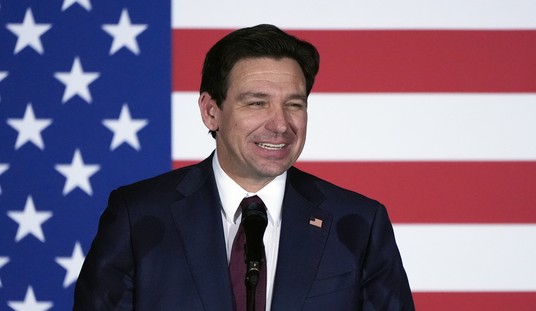The onslaught of political advertisements that both the Romney and Obama camps have begun to air have started to have an effect -- and it's becoming clear that money will make a big difference in who wins. Currently, the Obama campaign has outspent the Romney campaign in the swing states, and that effort seems to be paying off: according to USA Today/Gallup, if the election were held tomorrow, he'd hang on to his office:
At this point, Obama is the clear winner in the ad wars. Among swing-state voters who say the ads have changed their minds about a candidate, rather than just confirmed what they already thought, 76% now support the president, vs. 16% favoring Romney.
Obama and his allies have outspent Romney's side on ads so far by almost a third. Although the TV spots didn't start earlier than in recent elections, there have been more than ever before — including a negative flood from the new breed of super PACs — and they are continuing without the traditional summertime letup.
In the 12 battleground states, the race is all but tied. Obama leads Romney 47%-45% among 1,200 registered voters in the poll June 22-29 — a tick closer than Obama's 48%-44% lead among 2,404 voters in the rest of the USA over the same period.
The swing states survey focuses on a dozen states that aren't firmly aligned with either Democrats or Republicans. That puts them in a position to tip the outcome in the Electoral College. The states: Colorado, Florida, Iowa, Michigan, Nevada, New Hampshire, New Mexico, North Carolina, Ohio, Pennsylvania, Virginia and Wisconsin.
It's about to get even more intense: The two sides are poised to spend $100 million on ads over the next month, TheWashington Post calculates. Since advertising began for the general election, Romney and his allies have spent $85 million on TV spots, according to NBC/SMG Delta. Obama and his supporters have spent $110 million.
Recommended
While the timing of the ads is no earlier than it's been previously, there are more ads on television than ever before at this point in the campaign, and we can expect to see many more as time goes on. Right now, the Obama campaign has the edge and it seems to be correlated both how many and what kind of ads he's running. Negative ads about Mitt Romney, painting his tenure as Massachusetts governor in a bad light, have tended to sway voters toward Obama. Of course, it's very early in the process, and given that the Romney campaign raised $100 million in the month of June alone, they'll have the time and resources to catch up.
The science behind campaign ads may seem silly, given the minor segment of the population that will change candidates after watching an ad, but as one expert pointed out, every vote counts in a close election:
Only 8% acknowledge the ads changed their minds about a candidate, for better or worse, though analysts say the actual number is probably higher because some voters don't want to admit or may not even realize their views were affected. Obama leads among those voters nearly 5-to-1.
Ken Goldstein, a political scientist and president of Kantar Media CMAG, which monitors political ads, says even a small effect could have decisive consequences. He cites the razor-thin margins in Florida and elsewhere in the 2000 election. "Listen, I think the political-advertising impact is pretty modest — a small effect that only matters on the margins," he says. "But ask Al Gore if the margin matters."
Indeed, this may be an election won in the margins -- and right now, Obama has the edge.

























Join the conversation as a VIP Member